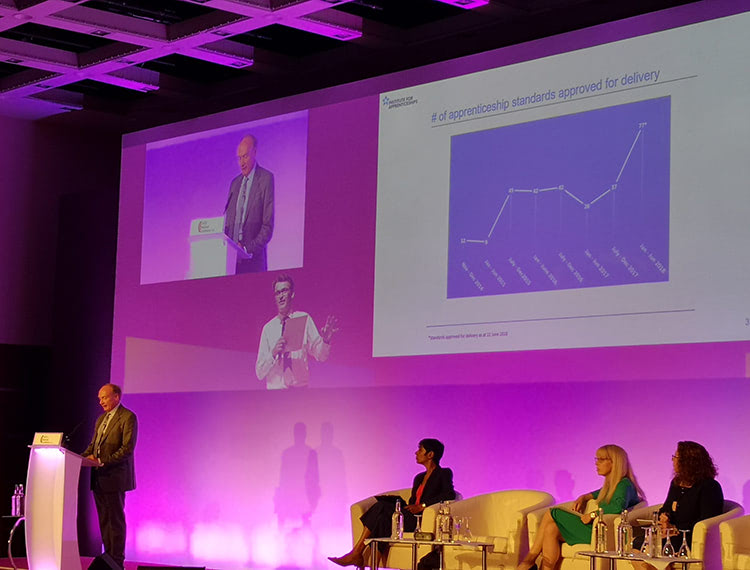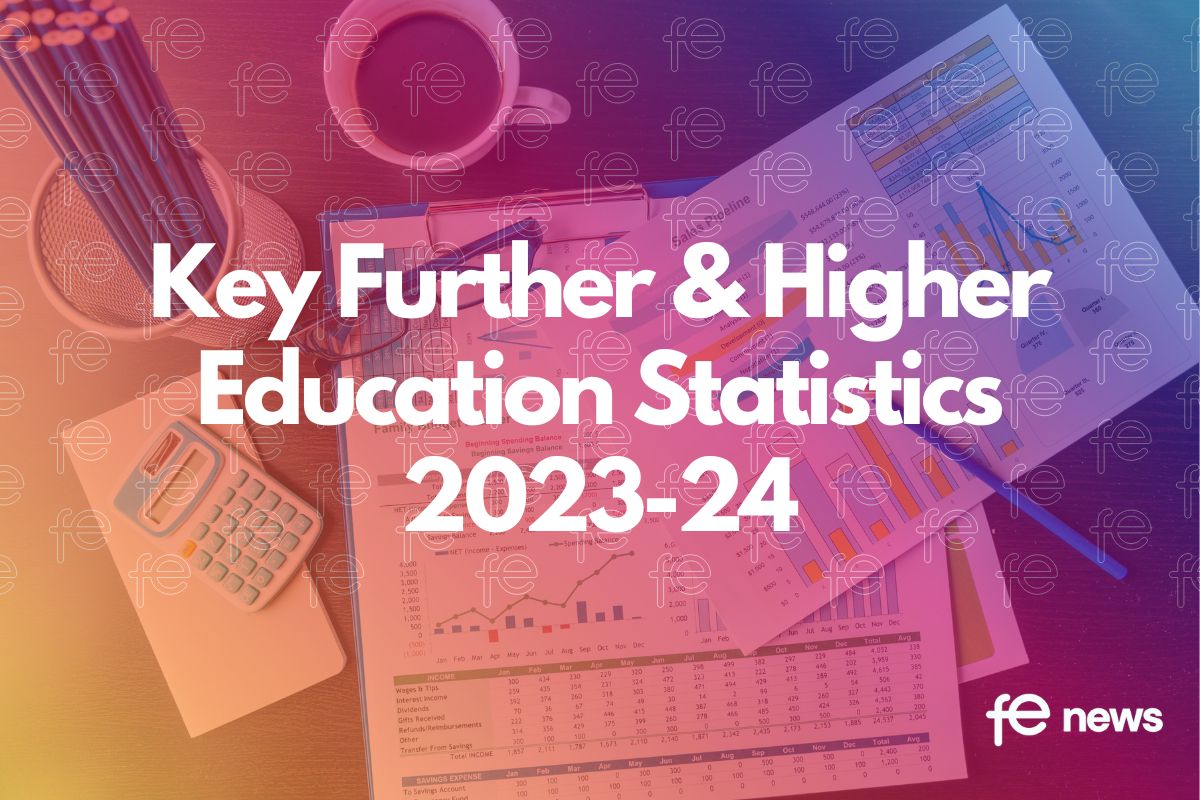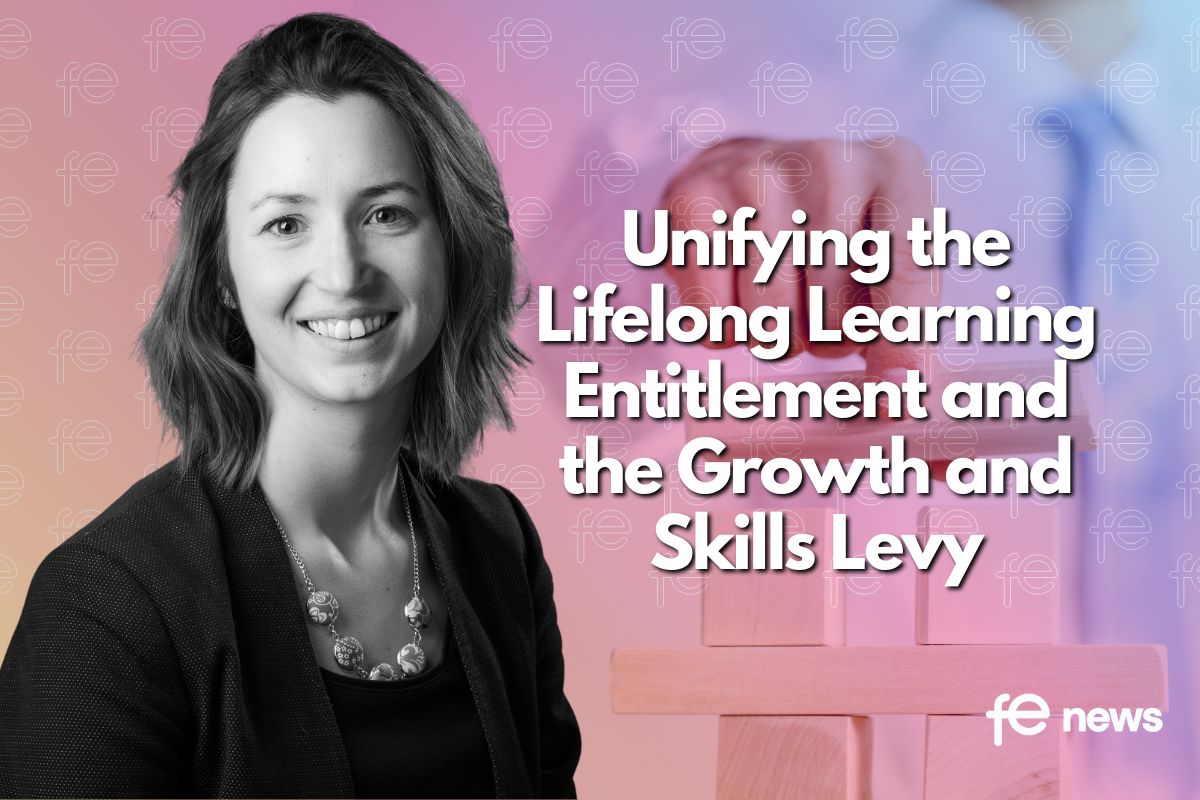Sir Gerry Berragan keynote speech: The Institute 10 Months On

Sir Gerry Berragan talks about the first 10 months of the Institute for Apprenticeships at the Ofqual Conference:

So I’ve titled my talk ‘The Institute 10 Months On’.
I have been in this job now three months almost to the day, but prior to taking up this post I was on the board for six months or so prior to that and it’s really great to be able to join the Ofqual conference today and talk to so many awarding organisations all in one place.
I want to cover three things in the next 20 minutes or so.
Firstly, a bit of background, because I am constantly surprised when I talk to audiences who are engaged in further education and skills training as to how few really recognise, if you like, the government’s position on this and understand what’s going on in terms of transformation and I want to talk about the Institute’s place in that.
Secondly, I want to talk about a view on how it’s going from the Institute’s perspective and then to look ahead at what’s coming next.
Policy Background
So the policy background first of all, the Government reforms that have been pursued since about 2011 in the skills domain aim to reboot training provision in England.
The core diagnosis was that we suffered from low productivity, partly due to low or inappropriate skill levels, despite around £3 billion of government money being spent in this area each year.
The main reason was that the system had developed as provider-led, leading to the dominance of provision in about 10-20 occupations, most of which were convenient and profitable to deliver rather than because they met the varied needs of employers, learners and the economy.
Other problems included the fact that although participation is quite strong with around half a million apprentices starting their apprenticeships each year, only just over half of them went on to complete them.
Few of those apprentices progressed beyond the level that they initially took, with only around 15% genuinely progressing higher up to the higher skills levels.
More than 15% of all apprentices received no training at all and around 20% didn’t know they were on apprenticeship, so despite all of that large-scale effort and cost to the taxpayer, employers continued to complain of skills shortages skills shortages particularly at levels 3, 4, and 5.
So two main reforms have been implemented:
- The first one was to move purchasing power more directly to the end user, in this case the employer,
- and secondly employers being given direct control over the curriculum by removing intermediaries such as sector skills councils, and tying awarding more closely to industry defined output standards.
At a programme level, you can see these strategies playing out in the decisions to test employer ownership, the Wolf and Richard reviews, the abolition of the qualifications and credit framework, the defunding of sector skills councils, and the abolition of the UCES.
On a more positive note, the creation of further education loans, implementation of trailblazing, and the creation of the Institute, and the establishment of the employer’s levy and with it the employer account structure.
So the role of the Institute within these reforms is to secure quality through two mechanisms.
Firstly through direct employer contribution to apprenticeships design; instead of having standards bodies operating in a separate bubble, work is owned by one organisation on a consistent basis with the employer design and challenge locked in.
The subsequent standards are then open and available for all to use, and cannot be monetised. Secondly, restricting the free market in awarding and there are two approaches here, two separate approaches.
On technical education, moving to a single awarding organisation for pathways, so the awarding organisations themselves compete for the market rather than within it, and on the apprenticeships, by securing a robust, independent endpoint assessment, this generally takes away the need for separate qualifications, except where legislation, regulation, or professional status is required.
So the Institute’s mission, and this is a mission I’ve developed myself taking on the job, is to improve access to high quality apprenticeships and technical education in order to transform the skills landscape.
That remit is both enabling and regulatory. Enabling because it’s helping employer groups to develop quality apprenticeship standards and assessment plans, and regulatory because it ensures that those standards and assessment plans meet the agreed quality criteria to be funded.
If you look at the words in the mission, improving access is about not just improving access for potential apprentices and for employers, but also for all of those minority groups or those from socially disadvantaged groups being able to access the opportunities that apprenticeships offer.
The Institute also provides oversight on the provision of quality assurance for the delivery of apprenticeship endpoint assessments and it provides that quality assurance itself where employer groups have been unable to identify any other arrangements and it manages the potential conflict of interest between those two roles by contracting out the latter role, the quality assurance role itself.
This remit will expand later this year to include responsibilities for technical and professional education in England and the first element of that transition, which was responsibility for the occupational maps, that grouped those skilled occupations together with similar knowledge skills and behaviours, and that transition took place in November last year and we’ve just run a public consultation on that on those maps, which concluded in early February.
So that’s the policy background.
How is it going?
Well, in January last year, the IfA didn’t exist and according to the Cabinet Office External Assurance Review it was six months behind schedule with three months to go – no Board was in place, the organisation had a handful of staff, and questions were being asked during the passage of the technical education bill as to whether the IfA would be ready on time.
By the end of February, a month later, the Institute had secured office space, ICT services, and was on-boarding staff. The size of the organisation was around 40 at launch, rising to a full complement of 86 by October, and by October the Institute was fully operational, had a digital management system, its own website, and a set of values.
The Civil Service People Survey for last year yielded a staff engagement score of 70%, putting it in the top 10% of Civil Service organisations alongside Treasury and the FCO.
The IfA also had a new Board, which went through its induction process in March last year, 13 days ahead of launch, and that Board, as you probably all know, is largely consisting of employers of a mixed background, private/public sector, finance, manufacturing and engineering, and some from the FE sector too.
10 months on since our creation, there are now 228 standards approved for delivery and 300 more at some stage in their development. This is already considerably more than 133 of the old framework apprenticeships that are still funded by ESFA and will continue to be funded until 2020.
In terms of apprenticeship starts, I know there was a wobble, people got worried in the autumn that the numbers starting apprenticeships this last year were down from previous years, particularly given the government’s manifesto commitment to have 3 million apprenticeship starts by 2020.
When you drill into the data, it becomes clear that there was a rush of starts on level 2 and level 3 framework apprenticeships, the old apprenticeships, in the first four months of 2017 before the Institute came into being, particularly by non-levy paying employers, i.e. the SMEs.
And this was clearly an attempt to get ahead of the 10% co-investment contribution requirement and the 20% off-the-job requirement that would come into force from April.
I think there was also a concern that some of those frameworks might stop being funded and they wanted to go onto them before that happened.
But then since April, there has been a stark reduction of around 50% in the numbers starting those low level framework apprenticeships, but an exponential growth in the numbers starting on standards-based apprenticeships, the new apprenticeships, particularly in the scope of them and the range of them, and instead of starts being on around 10 or 20 frameworks, they are now on a much wider basis, and increasingly at levels 3, 4, 5 and 6 and indeed 7.
Around 40% of all starts are now on standards, that figure a year ago was around 10%, so you can see the exponential growth in starts on standards, the breadth of apprenticeships being taken up and, indeed, the growth in the higher level apprenticeships, which is indeed where employers have been telling us for a number of years, the real skills gap sits.
This all suggests that levy payers are keen to use their levy on what they regard as higher quality apprenticeships, that yield better outcomes in terms of upskilling for apprentices and for the wider workforce.
And as the official statistics are updated month on month, it seems that the overall fall in starts last year was not nearly as great as was initially reported.
Given that this was always the aim to transition away from frameworks and seamlessly to standards over time, we shouldn’t be surprised or disappointed by this outcome.
This actually is a manifestation of the plan working.
My sense is the government needs to hold its nerve and see this through.
This is probably year three of a six-year transition programme, by the end of which, there will be well over 500 standards-based apprenticeships, the levy will have kicked in, the accounts for SMEs will be open and we will be in a whole new, different world by the time those last frameworks are turned off.
I also know that there was a sense of frustration out there, particularly amongst some of the employers at the pace of the shift from frameworks to standards, and with some employer groups criticising the Institute for being slow and bureaucratic in approving new standards.
And let me be clear, some of this criticism was fair, given that the Institute, as I have said, was trying to perform this role while still building its own capability, I describe it as building the aircraft while it is in flight.
And it was using processes inherited from when the department previously performed this function using officials to moderate standards and with ministers providing sign-off.
So that is why we launched the ‘Better, Faster’ initiative just before Christmas, aimed at streamlining the approvals process.
But you should also understand that some of this criticism is also a convenient proxy used by those who resent paying a levy and wouldn’t want to be seen as being reluctant taxpayers, and also by some of those delivery organisations who will stand to lose out from these reforms and have no interest in branching into standards.
There is no shortage of vested interests here, so when you hear such criticisms, be just a little bit sceptical.
So what is next?
Well, for the Institute, the period between now and the summer is critical.
The service improvement work that I talked about, the better and faster work is being rolled out and trailblazers, I am sure, will see a higher quality and more consistent service enabling new standards to be approved much more quickly.
What we found when we looked into this work and we did the lean workshops was around 70% of the time involved in developing a new standard was with the trailblazer group, 30% with the Institute, so as much as we could do within the Institute to improve our processes, the real gains were to be made in helping trailblazers get it right first time, so a lot of the effort in the better, faster work is in helping employers do that.
I attended last week one of these new intensive workshops with the advertising trailblazer group where they developed, from scratch, their assessment plan in two days helped by Institute staff with all their key players in the room, so this can be done and it can be done much more quickly than we have done in the past. So that shows a vision of where we might get to.
By summer, our fully digital service will have been launched, both improving the user experience and generating substantial process improvements internally in the Institute.
We have also recently had our first recognition event with the membership, this is the 100+ people, sector experts, who sit on our route panels and who act as our expert advisors on standards and assessment plans coming through.
That is a distinctive feature of the IfA. Given that there is more than 100 of them and less than 86 of us, it shows you the proportion employer input into the Institute.
We will also need in this next period to conduct reviews into the stock of existing standards-based apprenticeships where some of them have been going now for nearly three years, and we know that there were some price and quality compromises made earlier on to get some momentum into the reforms and we have also been asked by ministers to review a selection of the funding bands for some of those early standards using the new funding methodology that we have developed, to ensure they remain appropriate, deliverable and good value for money.
This period is also critical for us because it should fire the first real shots for the Institute in the technical education arena.
The department has recently agreed to us to begin to hire a new dedicated team of staff, and we have started to do that, and we will see an increase in complexity as the Institute adds both procurement and contract management functions to the existing curricula and development work.
We will also nearly double in size. And although technical education is still in its design phase, it is clear that by taking the similar approach to apprenticeships i.e. deriving the content and output standards for these qualifications using the same employer input that we used for apprenticeships, this will have a major impact on both employers’ recognition of those qualifications, but also on the existing level 3 qualification landscape, which Sally showed earlier.
I know that Sally talked about this earlier, but I want to reaffirm that we’re working really hard, hand in glove with Ofqual to ensure that the accreditation of these qualifications and the approval of their content is seamless from the perspective of the awarding organisations.
I describe this arrangement as an alliance built around a common aim.
We also share Ofqual’s concerns, that Sally mentioned in her response to the consultation exercise, about the need to clearly articulate the need for these qualifications, how they fit into the new qualifications landscape, what they offer prospective students and their parents, and also to deliver them in a way that ensures the success of their wider rollout.
The last thing we wish to do is start with the first three on the wrong footing and get them a bad reputation.
We need to deliver them successfully from the outset, and I think the timeline for the delivery of the initial three pathways is worryingly tight in that regard.
I hope that gives you a flavour of what the Institute has been up to in its first 10 months and what it plans to achieve moving forward over the next year.
There is certainly no shortage of change or challenge in this area, just as in the wider qualifications landscape, as Sally described earlier.
This puts a premium on all elements of the training and education establishment remaining focused on the goal to transform the skills landscape, fill the skills shortages, provide transformational opportunities for people seeking to upskill themselves and, ultimately, improve the productivity of this country, and that is probably enough from me now.
Sir Gerry Berragan, CEO, Institute for Apprenticeships











Responses